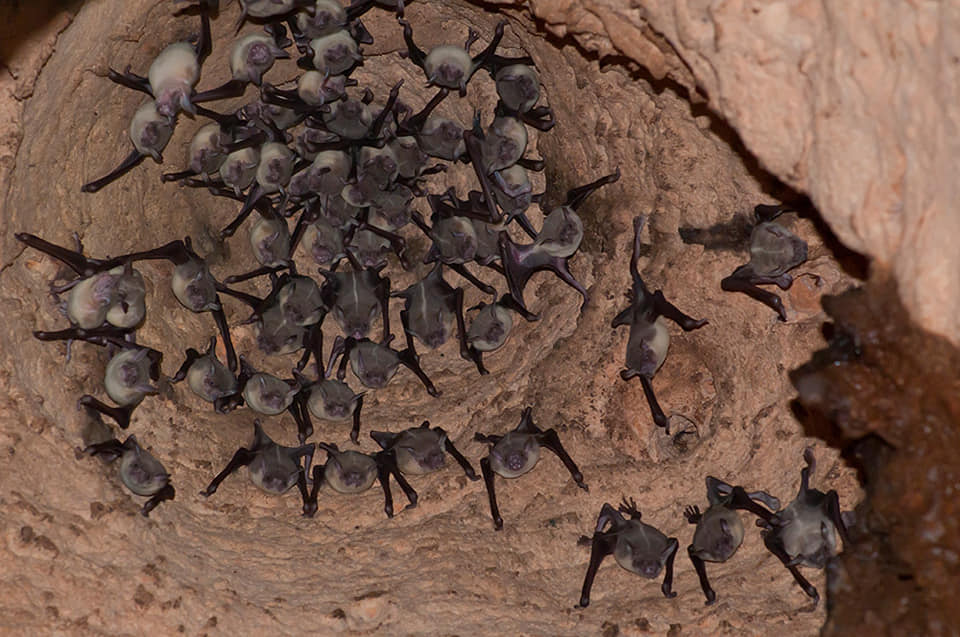It is found throughout the Cuban archipelago, including the Island of Youth, but it also lives in Mexico, Central America, the north of South America and the Greater and Lesser Antilles.
It is the largest of the Cuban bats; the male is larger than the female and can reach up to 87 grams in weight and has a wing extension of 71 centimetres.
Just occasionally a large daytime roost can be found in caves. It commonly gathers in smaller groups in hollow palm trunks and other trees, and it can also be often found singly.
It feeds mostly on small fish of 70 to 80 mm, both in freshwater or coastal areas. It also feeds on water beetles.
In Cuba, scientists have made observations of the Noctilio leporinus fishing in marshes. Gundlach also referred to having observed it “flying slowly after dusk over lagoons".
The robustness and flight characteristics of Fishing Bats have suggested to scientists, their ability to withstand long-distance flights. Studies conducted showed that individuals from a certain colony managed to return after being released within 30 miles of it.
Their large size and the confined space where they gather together means there is a strong smell of rotting fish, as their droppings are not dry like those of other bats, underneath the daytime roost can be found a moist and glittery cone-shaped hill of guano.
At the other extreme in size, there is also a large population of Butterfly Bats in Caguanes, which are the smallest bat to be found in Cuba - and the world's third smallest. We'll talk about that in another article.





 RSS Feed
RSS Feed